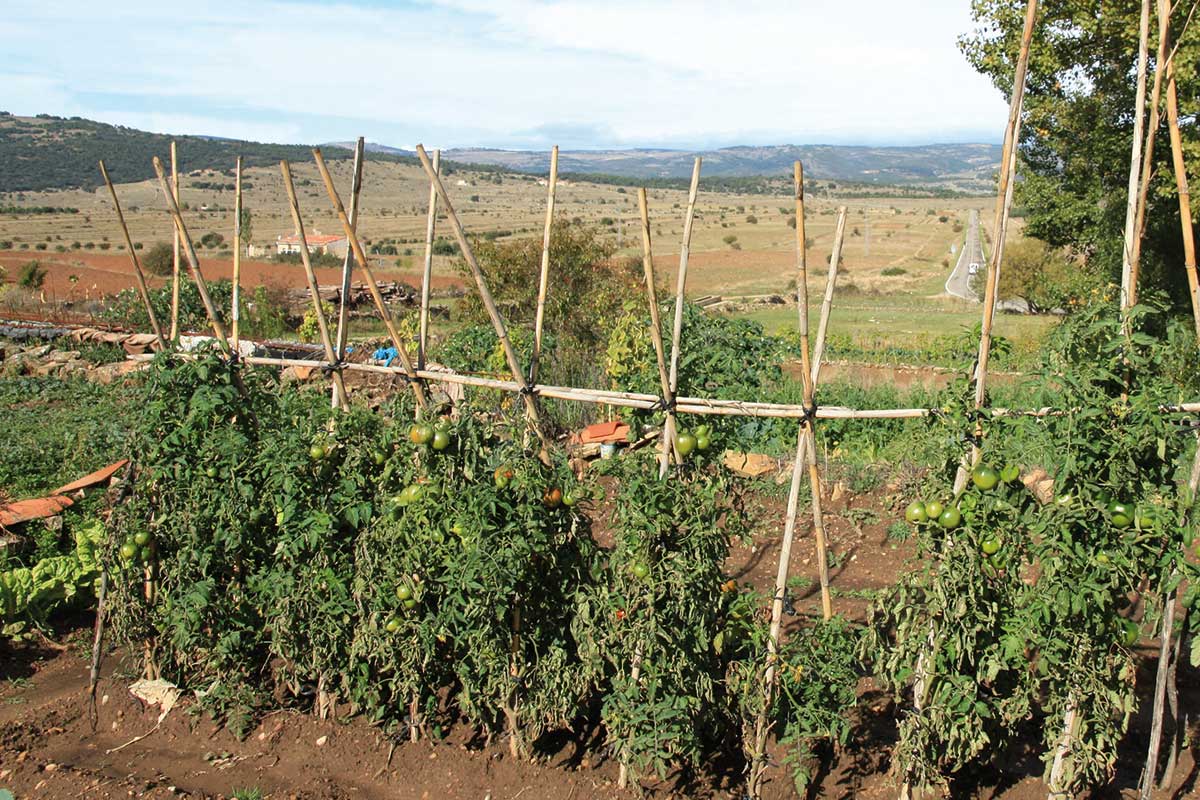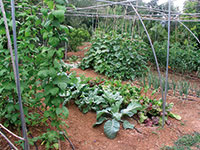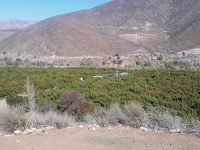
Having a garden is quite simple. All you need is a bit of land and some basic skills and you can practice the art of quiet and quality agriculture, like our grandparents used to. There is an optimum size for a vegetable plot, but with just a few square metres you can feed the family, and even exchange some of your home-grown produce with friends. The minimum size for those without land (but lots of interest) is the terrace or balcony garden, where fair-sized flowerpots can be used to grow vegetables. By contrast, we may be overwhelmed by a large garden, as the popular Spanish saying goes: «Tierra, la justa: ni poca ni mucha», in other words, one should have just enough land, neither too much nor too little.
Having a vegetable plot or an allotment returns to us an almost forgotten right: the right to grow our own food and to serve up our family’s own home-grown produce. To recover control over our food, albeit partially, is of utmost importance. Current conventional agriculture is an industrial activity, a far cry from the traditional tending of the fields. The same is true of retail markets, to the point where nowadays it is normal for citizens, as consumers, not to have a clue where the food they buy comes from, who produced it and under what conditions.
«Having a vegetable plot or an allotment returns to us an almost forgotten right: the right to grow our own food and to serve up our family’s own home-grown produce»
Tending a vegetable garden is an enjoyable activity and even more so when it is done without the need to make a living from selling the produce. Without this concern, the other aspects of tending a garden are all the more appreciated. We are more aware and in tune with natural cycles, we take an interest in seasonal weather and we also partake of necessary physical exercise, which is suitable for people of all ages. What is more, we come to know the lifecycles of plants and discover the creatures that visit the garden. We must necessarily get involved in recycling waste, and increasing the diversity of our piece of land. Not to mention the social aspects, gradually recovering neighbourly habits, like exchanging seeds and produce, helping out with tasks, and so on.
The garden calls for attention, making us appreciate the final fruits all the more. We have to plan the plot, organise the planting, take decisions and carry out tasks at just the right moment. These are the responsibilities we take on as directors of this personal project. The reward is home-grown, healthy and good quality food, grown as responsibly and sustainably as possible.
The garden also opens the door to unimaginable delights. Maybe our garden is our rest, although country folk remind us –with wry wisdom– that «better a veggie plot than a garden and better a chicken than a sparrow». Either way, it may turn into a hobby –and each of us can paint our own picture– (no two gardens are alike!). Even psychologists speak of its virtue in terms of providing relaxation and harmony, helping us to escape our everyday problems. Gardens also have an educational component, especially in the family context and for the younger generation. Hence, the special interest in school gardens for pupils to tend.
The most appropriate way to manage a kitchen garden is by following traditional agricultural ways, which also helps us to recover our Mediterranean agrarian culture. We are heirs to a rich tradition, inherited from the Romans and Moors, with emblematic gardens so characteristic of Valencia. We have a unique agrarian culture and are expert in managing lands with scarce resources, we are skilled in using tools, we are rich in agricultural words, in traditional varieties, in typical dishes… With the vegetable garden we become intermediaries, linking our ancestors with future generations, reminding us of our roots, at least in terms of food.
It may seem that hard work awaits us, but it should not be a burden. Each one chooses how far to go, and anyway, as Cicero said: «Agriculture is fitting for the free man, for the wise and for the simple». Trial and error, observation and correction, and chatting with elderly gardeners and farmers, will teach us how to enjoy our garden more and more. In future issues, this section will guide you, so you can get the best results from your kitchen garden.
| BEST FRUITS For «cutting teeth» |
 Many vegetable varieties can be grown in just a small plot, as in this allotment south of Valencia (la Ribera), with a host of summer vegetables. The previous page shows a kitchen garden in the province of Castelló (L’Alforí in the Maestrat Vistabella, L’Alcalatén). Photo: Josep Roselló For beginners, to get into the swing of things, start by growing something you like, well known and not too complicated, that way you will gain experience. The simplest to grow are radishes: work the soil and sprinkle a packet of seeds on top, stir the soil and water. You only have to pull out the weeds that keep appearing and keep the soil fresh, and in 40 or 50 days you can eat your first harvest. Lettuces are always welcome at the table. They are easy to grow and are cultivated in three-month cycles. Take care that you plant varieties suited to the season. Once planted, water frequently, but without flooding to avoid flowering, which is the most common problem in hot weather. If you want to eat lettuce over a long period, stagger planting at two-week intervals, avoiding midsummer. You can also sow beans of all kinds, with flat or rounded pods, or for dry storage, and it is better to choose the dwarf varieties. The seeds are sown once the cold is over and after watering the soil (do not water again until the seedlings appear). Beans do not require a special fertilizer, but do not let the soil dry out. Just a few zucchini and cucumber plants are enough as they produce a lot. Pick the young fruits every two or three days as they are not so tasty when overripe. Finally stagger the harvest, picking the best piece at the right time for eating, that way you will enjoy all its properties and flavours, and as the Spanish saying goes: «Planta, siembra y cría, y vivirás con alegría», in other words «plant, sow and tend, and joyful you will live». |





